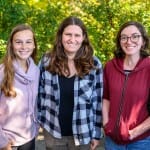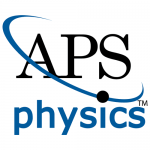Category Science & Technology
Earth’s orbit is more important in driving tropical Pacific climate than previously thought
Researchers found that the atmosphere and ocean pushing on each other is important in creating the climate on the tropical Pacific. Read More
UW researchers working to improve and simplify models for how PFAS flows through the ground
Researchers found that several factors have a major influence on where and how long harmful PFAS chemicals stay locked in the ground before flowing below the water table. Read More
New carbon nanotube-based foam promises superior protection against concussions
A a carbon nanotube foam just one atom thick absorbs specific energy 18 times better than current U.S. military combat helmets. Read More
UW–Madison researchers key in revealing neutrinos emanating from galactic neighbor with a gigantic black hole
The astrophysical neutrinos coming from a Milky Way neighbor hold promise for future astronomical discoveries. Read More
Marine Protected Area creates spillover benefits for tuna fishing in Hawaii
The study showed that catch rates in waters close to the protected area increased by about 54% for yellowfin tuna, about 12% for bigeye tuna and about 8% across all fish species. Read More
Grad students work with climatologist on tool to alert communities to dangerous heat levels
In practice, the new warning system could help policymakers make decisions for how their population can stay healthy during extreme heat. Read More
American Physical Society names four UW faculty fellows
Four University of Wisconsin–Madison professors have been elected fellows of the American Physical Society, recognizing advances in physics through original research and publication, significant and innovative applications of physics, and leadership, service and contributions to the teaching of physics. Read More
Understanding freshwater foam may help in fight against PFAS “forever chemicals”
Research in the School of Engineering will advance our understanding of how PFAS chemicals behave in diverse aquatic conditions. Read More
Improved understanding of early spinal cord development paves the way for new treatments
Researchers at the University of Wisconsin–Madison are developing the means to turn stem cells into a wide range of specific types of spinal cord neurons and cells in the hindbrain — the critical nexus between the spinal cord and the brain — paving the way for improved prevention and treatment of spinal cord disease. Read More
New interactive mural invites exploration and engagement with science
A multilayered mural painted in bold colors now hangs in the atrium of the Discovery Building, depicting the many facets of STEM research and inspiring new generations to engage in science. Painted QR codes make the mural interactive, drawing the viewer into the stories of renowned and lesser known Wisconsin scientists whose contributions have shaped society. Read More
NASA Astronaut Scott Kelly speaks at UW on his Year in Space
Retired NASA astronaut Scott Kelly spoke to a nearly full house at Memorial Union on Oct. 4 about his year in space, one day reaching the red planet and the importance of endurance through adversity. Read More
Decades of work at UW–Madison underpin discovery of corona protecting Milky Way’s neighboring galaxies
Astronomers at UW–Madison used light from quasars across 28 galaxies to illuminate a corona of warm gases mediating a trail of gaseous debris left by the Large and Small Magellanic Clouds, two dwarf galaxies orbiting the Milky Way. Read More
Unleash your curiosity at the 12th annual Wisconsin Science Festival
The 12th annual Wisconsin Science Festival includes more than 300 events across the state from Oct. 10-16. Most of the festival’s 300 events are free, including hands-on activities, talks with scientists and authors, films, performances, nature hikes, take-home science kits and much more. Read More
Radiolab’s Latif Nasser coming to Madison as fall Science Journalist in Residence
Journalist, science historian and Radiolab co-host Latif Nasser will visit UW classrooms and speak about compelling science storytelling on as part of his tenure as UW–Madison Science Journalist in Residence. Read More
One-minute data from UW helps NASA detect wildfires faster
Researchers at UW–Madison's Space Science and Engineering Center are delivering up-to-the minute satellite data to NASA to assist efforts tracking and monitoring wildfires. Read More
20 years after founding, MS in Biotech drives Wisconsin’s biosciences economy
Twenty years on, UW–Madison's MS in Biotechnology continues to prepare students to take leadership roles in the burgeoning biotech economy. About two-thirds of graduates remain in Wisconsin. Read More




















